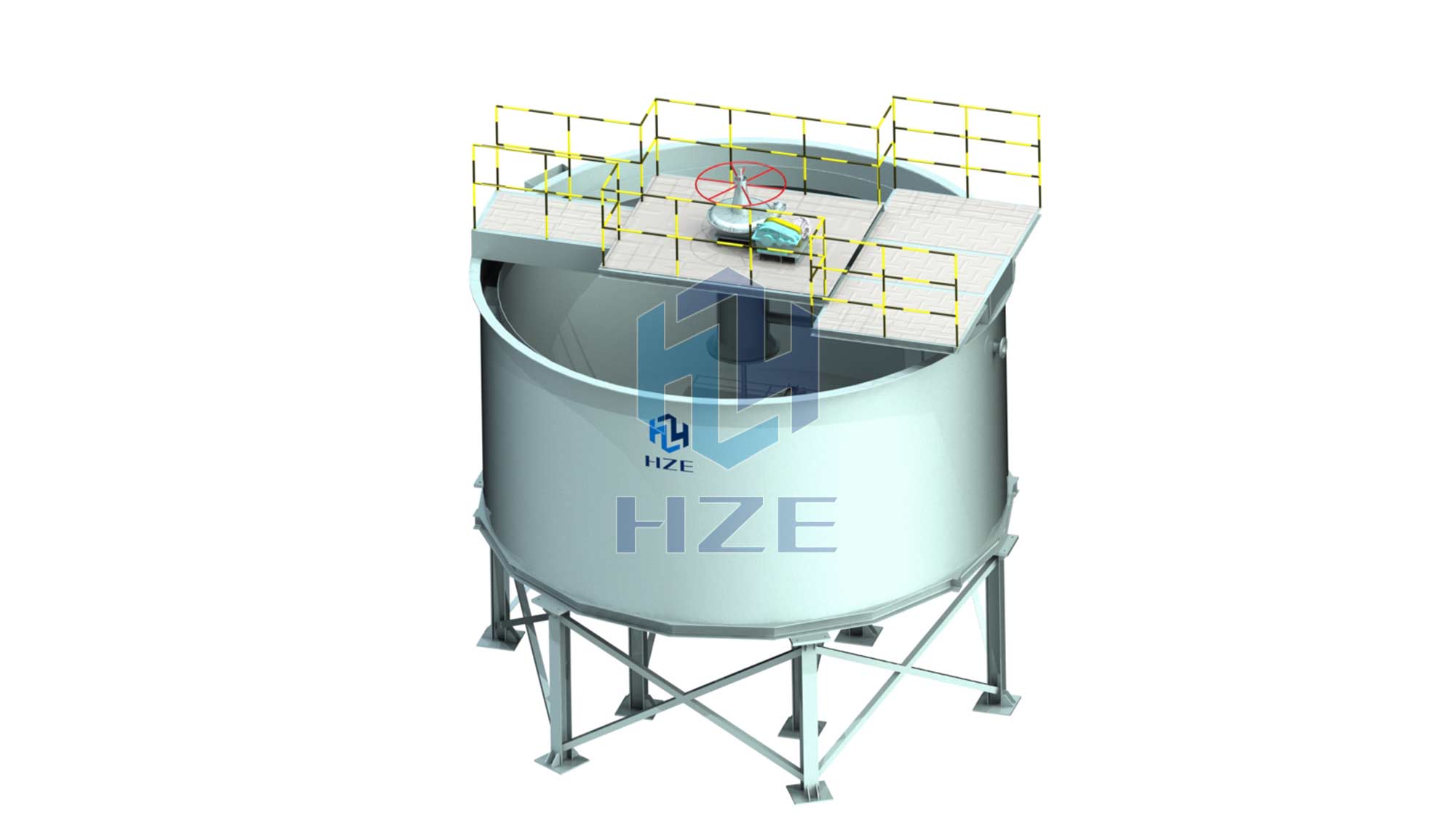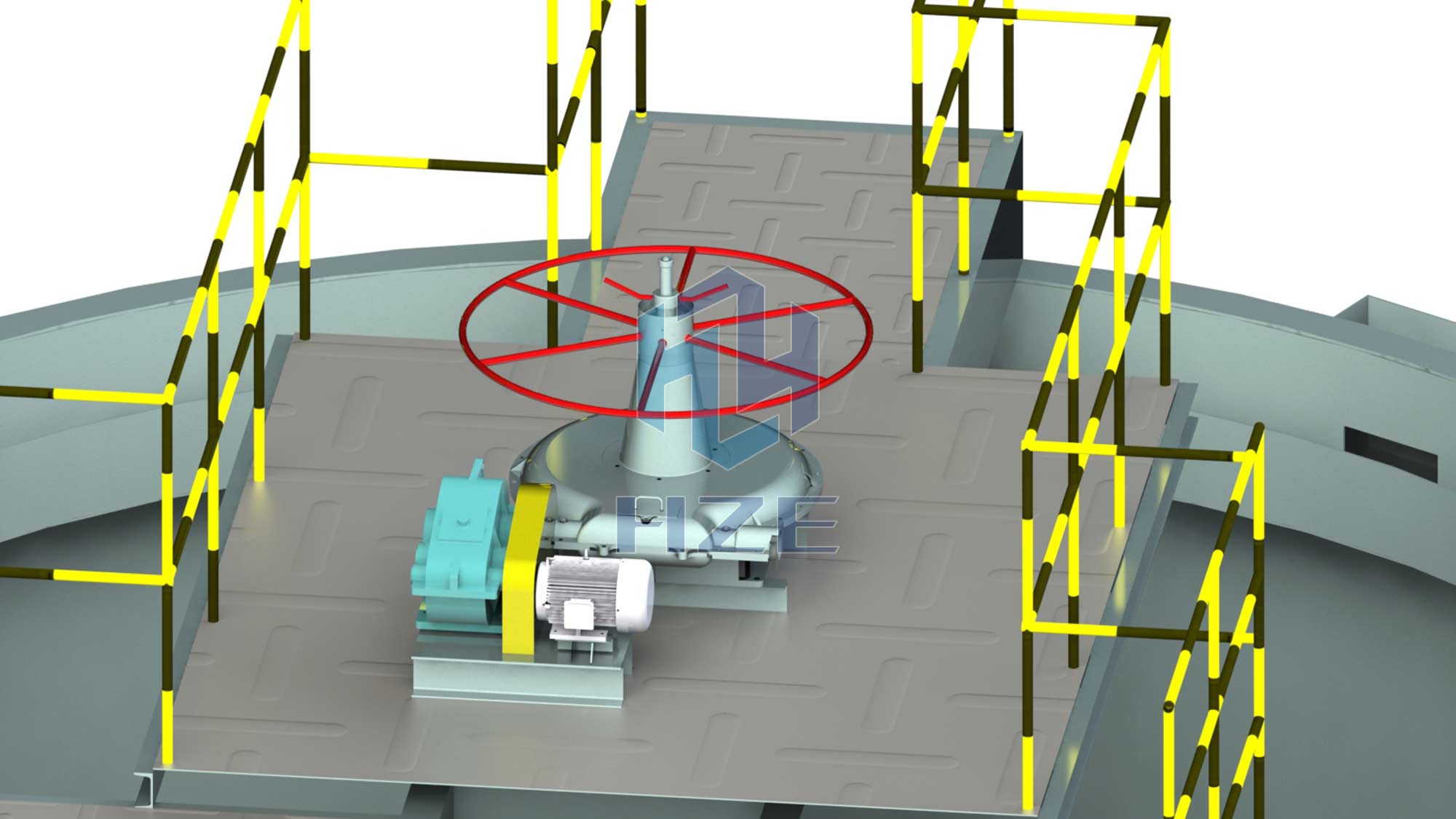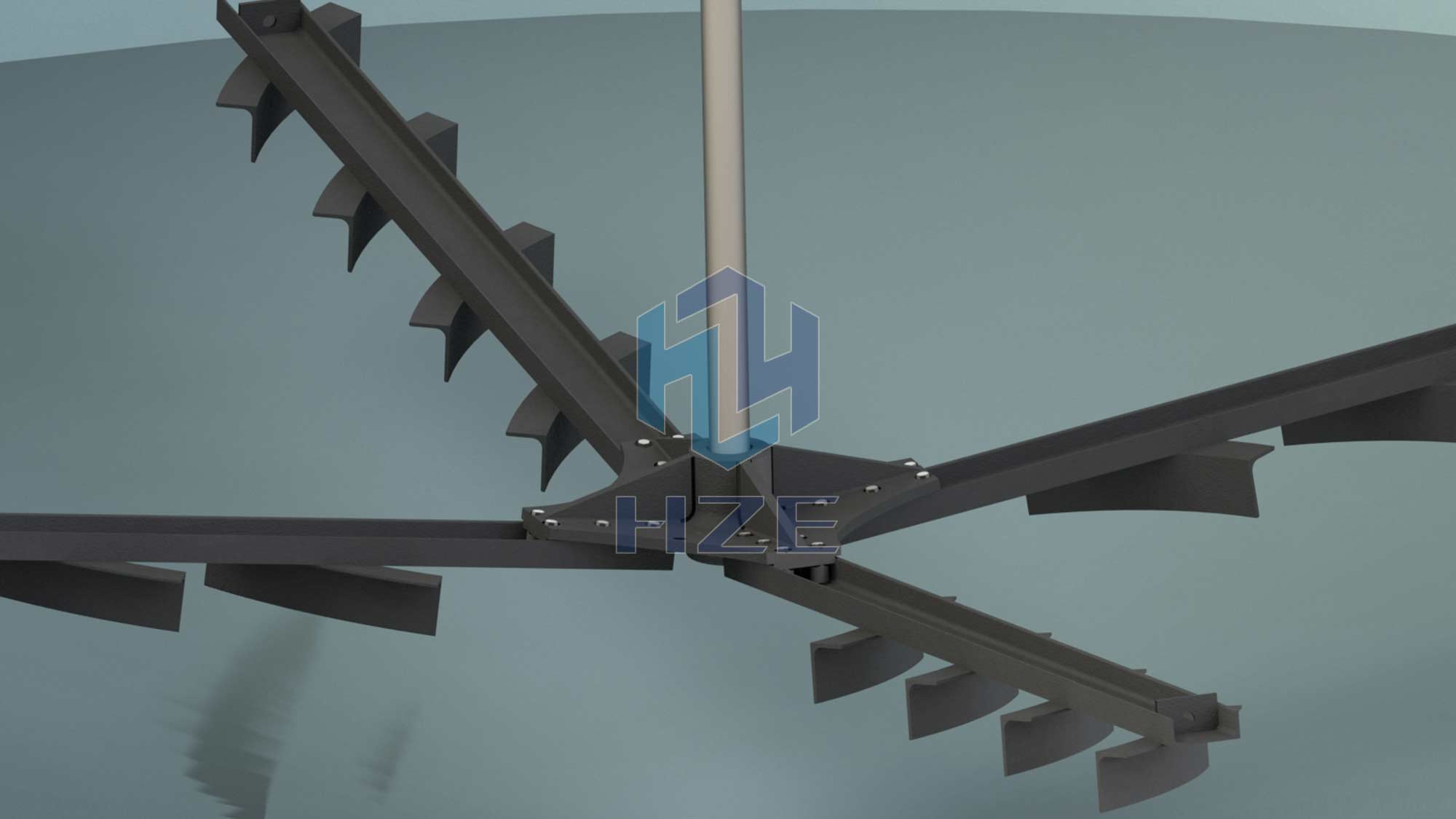High-efficiency Thickener
Working Principle
The thickener is a machine that separates liquid from solids. It is defined as a method of continuous dewatering of a dilute pulp, wherein a regular discharge of a thick pulp takes place which is of uniform density, concurrently with an overflow of clarified solution. The solids particle size range in thickeners is generally from 0.5 mm to a few microns. Thickeners are often rated on kg of solids per square meter of surface area.
Briefly, its functioning can be explained with the rake that is driven in a thickener, which rotates slowly over the bottom of the tank, and slopes down towards the centre and moves the materials settled on the bottom to a central discharge.
The continuous thickener consists of a cylindrical tank. Pulp is fed into the centre of the tank via a feed-well. The clarified liquid overflows a weir, while the solids which settle at the bottom of the tank are withdrawn as a thickened pulp from an outlet at the centre. Several rotating radial arms are assembled on the rake frame in the tank, from each of which are suspended a series of blades, shaped so as to rake the settled solids towards the central outlet.
Features
The degassing box is equipped to avoid the solid particles attaching to the bubbles remained in the feeding pulp which settle as the parachutes.
The outlet end of the feeding pipe is installed below the solution level to avoid air mixing the pulp during the feeding.
The stop baffle disc is amounted under the bottom of the feeding well and it is more than 1 meter under the solution level in order to ensure the uniform feeding and avoid the pulp flow destabilize the clarification layer.
The inner overflow weir is equipped to cause the clarified solution flows along the designed route to prevent the short circuit so that the sedimentation area is enlarged much.
The circular overflow weir in saw tooth shape causes the overflow uniformly flows out of every position.
Application
The thickeners are generally used in metallurgical field with the purpose of thickening prior to agitation, filtration, in the countercurrent washing of cyanide slime, and more thickening ahead of floatation, for dewatering tailing to recover the water for reuse in the mill and for thickening concentrates.
The thickeners are widely used in various industries including mining, coal, chemical, industrial, environmental (wastewater management), municipal and paper industry.
Technical Parameters
|
Model |
Tank Diameter (mm) |
Tank Depth (mm) |
Settling Area (m2) |
Capacity (t/d) |
Power (kW) |
|
NS-2.5 |
2500 |
1800 |
4.9 |
5-22.4 |
1.1 |
|
NS-3A |
3000 |
1800 |
7 |
5-23.3 |
1.5 |
|
NS-3 |
3600 |
1800 |
10.2 |
5-28.5 |
1.5 |
|
NS-5 |
5000 |
2956 |
16 |
16-90 |
1.5 |
|
NS-6 |
6000 |
2956 |
28.3 |
98 |
1.5 |
|
NS-7 |
7000 |
3000 |
38.5 |
140 |
2.2 |
|
NS-8 |
8000 |
3318 |
50.2 |
185 |
3 |
|
NS-9 |
9000 |
3376 |
63 |
210 |
3 |
|
NS-12 |
12000 |
3600 |
113 |
370 |
3 |
|
NS-15 |
15000 |
4000 |
176 |
580 |
5.5 |
|
NS-18 |
18000 |
4400 |
255 |
960 |
7.5 |
|
NS-20 |
20000 |
4400 |
315 |
1200 |
7.5 |
|
NS-24 |
24000 |
4400 |
452 |
1400 |
7.5 |
 DOWNLOAD
DOWNLOAD







